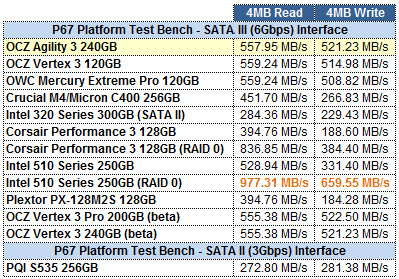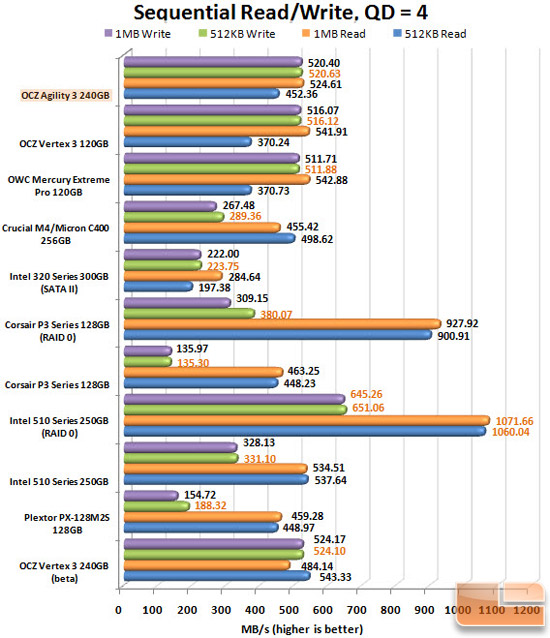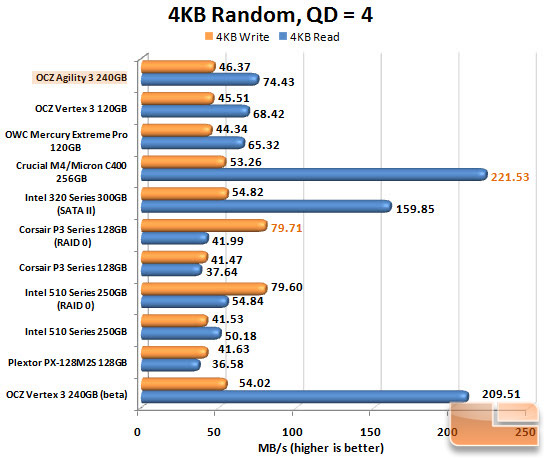OCZ Agility 3 240 GB SSD Review
ATTO & Iometer Synthetic Benchmarks
ATTO v2.41
ATTO is one of the oldest drive benchmarks still being used today and is still very relevant in the SSD world. ATTO measures transfers across a specific volume length. It measures raw transfer rates for both reads and writes and places the data into graphs that can be very easily interpreted. The test was run with the default runs of 0.5kb through 8192kb transfer sizes with the total length being 256mb.
ATTO – Intel P67 Platform

Benchmark Results: Nary a difference between the OCZ Agility 3 and the OCZ Vertex 3 240 GB drive which is a good thing as the scores are among the best for a single drive configuration. SandForce drives always do very well on this benchmark as the data used is very compressible.

This test employs compressible data showing the best case scenario in terms of data throughput for the SandForce drives. Let’s have a look at a few others that use incompressible data to see how that impacts the scores.
Iometer 2008 (1.1.0)
Iometer is an I/O subsystem measurement and characterization tool for single and clustered systems. It was originally developed by the Intel Corporation who has since discontinued work on Iometer and it was ultimately turned over to the Open Source Development Lab (OSDL). We chose the file sizes that best reflect many of the Windows transactions. 4KB random read/writes is very common on every day user machines. Large sequential writes represent large file copies. The drive block size is 512kb so it should give a very good indication of peak performance. We set the queue depth to 4 for the tests as generally Windows operations tend to happen at queue depths of 5 or less.


Benchmark Results: There’s a distinct difference with the Iometer tests – especially in the small random reads. The sequential tests show less of a variance and very good scores overall.

Comments are closed.